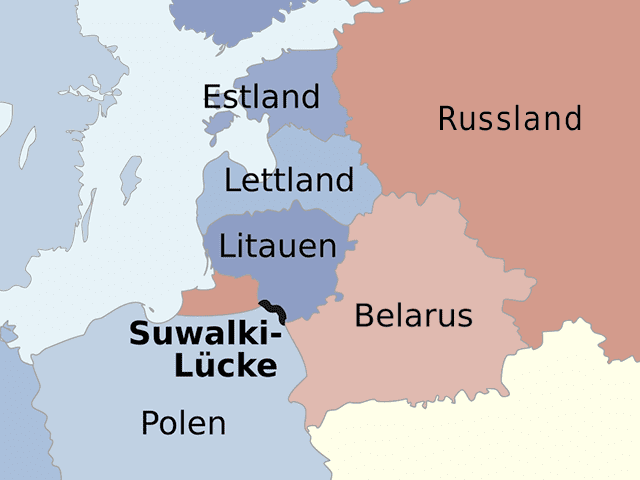
Polish Defense Minister Władysław Kosiniak-Kamysz
Photo: @KosiniakKamysz on X, 27 May, 2024
The Polish defense ministry on Tuesday, May 27th, unveiled the details of a massive defense infrastructure that the country plans to build along its eastern border with Belarus and Russia. The aim is to create a defensive wall to render any surprise invasion from Russia impossible.
The project—officially called “East Shield,” but dubbed by Polish media “Tusk Line” after France’s famous Maginot Line from the 1930s—will include physical infrastructure, such as bunkers, anti-tank obstacles, and even minefields, as well as electronic elements like satellite monitoring, anti-drone systems, and thermal imaging cameras, Business Insider reported.
“This makes up one complex system of defensive and deterrent actions. It connects access systems, but we will also purchase and implement modern anti-drone and reconnaissance systems,” Defense Minister Władysław Kosiniak-Kamysz said while providing details about the project for the first time since PM Donald Tusk initially announced it a month ago.
Good evening. Poland will build fortifications on the eastern border with Królewiec and Belarus as part of the "East Shield" to turn every enemy military attack into hell on earth and cause heavy losses in equipment and meat grinders. 1/3 pic.twitter.com/qYlZzetmyv
— ArkadiuszM Aki Tank (@ArkadiuszMolis1) May 27, 2024
The plan is to coordinate the project with the three Baltic states (Estonia, Latvia, Lithuania) which have also begun fortifying their borders with Russia. Construction will begin this summer and is planned to be completed by 2028.

The government has officially allocated 10 billion zloty (€2.4 billion) for the Shield that will span across Poland’s entire 700 km eastern border with Belarus and Kaliningrad, as well as the Suwalki gap—the 100-kilometer-long border between Poland and Lithuania, separating Kaliningrad from Belarus, that has long been regarded as NATO’s “weak spot.” The funds will also cover establishing additional military units and airfields.
“The ‘East Shield’ deterrence and defense plan is the largest operation to strengthen the eastern border of Poland, the eastern flank of NATO, since 1945,” Kosiniak-Kamysz added.
Bezpieczeństwo Polski wymaga natychmiastowego wzmocnienia i podejmowania konkretnych i efektywnych działań. Odpowiedzią na zagrożenia jest program #TarczaWschód, na który przeznaczymy 10 mld złotych. To wykorzystanie najnowocześniejszych technologii na rzecz bezpieczeństwa i… pic.twitter.com/Rl2AzGM6FP
— Władysław Kosiniak-Kamysz (@KosiniakKamysz) May 27, 2024
The bill will be submitted to the Polish Parliament in the coming weeks, but in the meantime, Warsaw will try to secure financial help from Brussels to help launch the construction as soon as possible, the officials stated.
At the press conference, the minister revealed that Poland plans to quit the Ottawa Convention—also known as the ‘Mine Ban Treaty’—which prohibits the use of anti-personnel landmines, deemed too cruel and dangerous for the civilian population even long after a conflict has ended.
Since the treaty’s establishment in 1997, Ukraine became the first and only among the over 160 signatories to violate it. Russia also uses landmines in the war, but it never joined the Convention in the first place. Now, Poland will also set up extensive minefields along its eastern borders, however, Kosiniak-Kamysz added that arming them will only take place “when we are sure that war is inevitable.”
Furthermore, the defense minister clarified that the East Shield is separate from, although complementary to, Warsaw’s previously announced plans to strengthen and modernize the previous conservative government’s 400 km long anti-migrant border wall, which—according to Władysław Kosiniak—is “leaky and needs improvement.”
Responding to leftist criticism referring to the plans to extend the anti-migrant border fence as continuing the previous government’s “inhumane” policies, the defense minister simply said the government will refrain from politicizing the issue and asks all other parties to do so as well.
